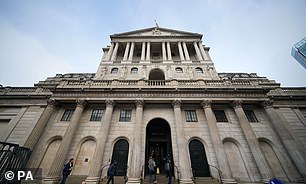THE UK government is expected to scrap its triple-lock state pension promises, in a move that could cost retirees £11,000 each.
Chancellor Rishi Sunak is believed to be considering options to keep state pension spending under control and in line with other benefits.
The triple lock is a pledge which says that the state pension will be increased by whichever is higher out of earnings growth, inflation or 2.5%.
It’s an extremely valuable promise and a vote winner that the conservative government pledged to until 2024 stick to in its 2019 manifesto.
But now, extraordinarily high earnings figures mean that the state pension could rise by as much as 8.8%.
If the triple lock stays in force, this means that pensioners could be taking home as much as £746.20 extra each year.
But experts have cautioned that this would not be fair, as the earnings figures have been distorted by the ending of the furlough scheme.
The job retention scheme meant that many people took a pay cut last year while they were out on furlough.
As they return to work, their salary bounces back to its usual pre-pandemic rates, which makes it look like everyone’s wages have grown when they haven’t.
Since the higher numbers started being reported, the government has been looking at solutions to keep its state pension bill under control.
The Sun broke the news that ministers were considering downgrading the promise to a double lock, where state pensions rose by the higher of inflation or 2.5%.
But there are concerns that inflation levels could also spike, meaning the Treasury is once again stuck with a hefty bill.
Now, a government source has told The Times that the treasury could decide on a single lock – limiting rises to 2.5% over the next year.
The source said that this approach was the most likely option.
This means that pensioners will miss out on both earnings rises and the Consumer Price Index (CPI) inflation measure.
Numbers crunched by LCP suggest that this could cost each pensioner around £11,000 over the course of a retirement.
Under average earning figures released yesterday, pensioners would have seen payments rise by 8.8%, which means an extra £15.80 added to the new state pension.
If current CPI figures of 3% were used, the new state pension would rise by just £5.40 per week.
And if the government chooses to limit the rise to just 2.5% retirees would get just £4.50 per week more.
That last figure is £11.30 less than under the triple lock, which works out at £587.60 per year.
Over a twenty-year retirement LCP estimates that there is a difference of over £11,000 per pensioner.
Steve Webb, partner at consultants LCP said: “A much lower increase next April would mean a permanently lower pension… Small differences can add up to huge sums”.
The move is likely to be extremely unpopular with pensioners and those approaching retirement as the government will be going back on its promises.
But industry experts have been saying that the triple-lock is unsustainable for some years now. In fact, increasing the state pension by earnings figures would cost the government a whopping £8billion.
Sticking to a 2.5% raise keeps the treasury bill down to £2.5million saving the government £5.5billion in a year.
Tom Selby, head of retirement policy at AJ Bell, said: “An 8% rise will put huge pressure on the public finances at a time when the Treasury is already staring down a fiscal black hole.
“The triple-lock is also politically controversial, particularly against the backdrop of the many young people who have lost their jobs because of the pandemic. That’s particularly the case when you consider that the average earnings figure is so high because it’s been distorted by the pandemic, largely by the furlough scheme.”
Steven Cameron, Pensions Director at Aegon added: The State Pension is paid for by National Insurance contributions of today’s workers, so the government will face a difficult balancing act.
“There will be questions around intergenerational fairness if state pensioners receive what could be a double digit increase, paid for by today’s workers, which is far above the pay rises those workers will typically have received.”
The government has agreed that high state pension rises would be unfair when other benefits are suffering and many people are facing wage stagnation and even redundancies.
The Treasury is already forecast to spend £105 billion on the State Pension in 2021/22 and £130 billion on overall benefits for pensioners.
Since the Triple Lock was brought in the State Pension has increased by 35%, while average earnings have increased by 27% over the same period.
The full basic State Pension in 2021/22 is over £2,050 a year higher in cash terms than in 2010 – an increase of more than a third.
A government source told The Times: “It’s very difficult to justify anything higher at a time when public sector pay is frozen and there’s economic uncertainty.”
A HM Treasury spokesperson told The Sun: “We will continue to support retired people while ensuring future decisions are fair for both pensioners and taxpayers.
“The Government will confirm next year’s state pension rates in the Autumn.”










